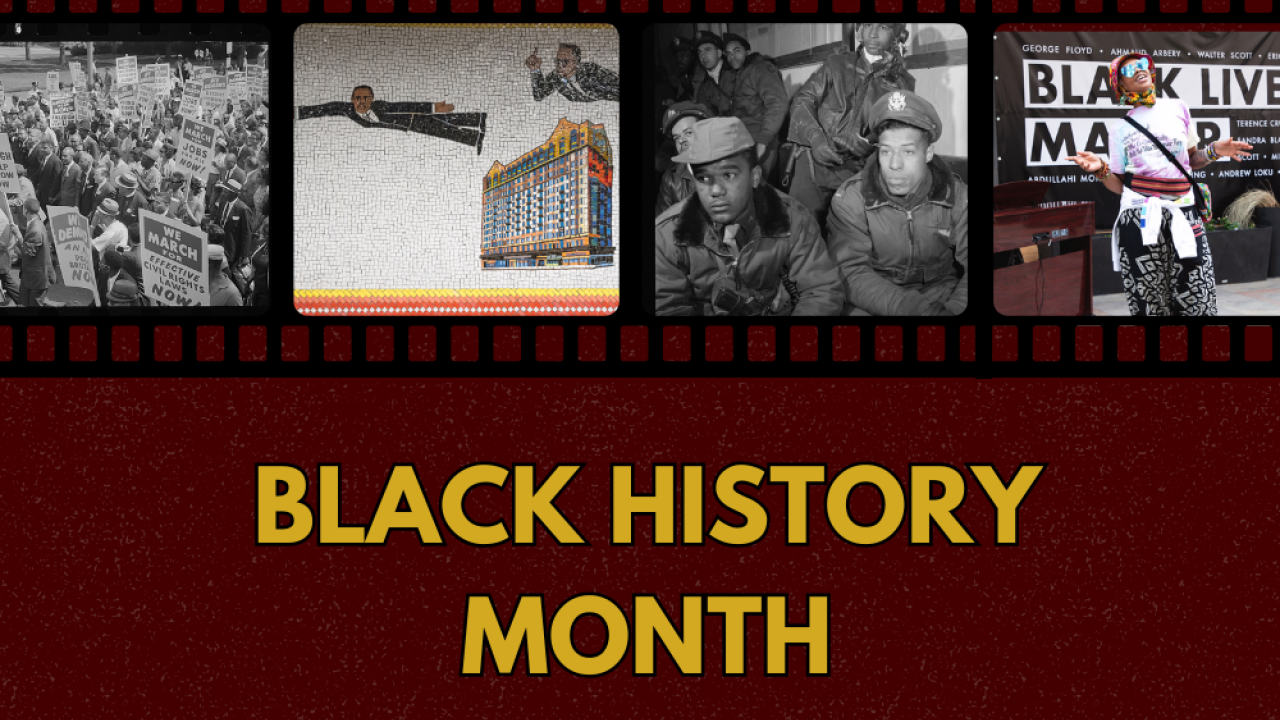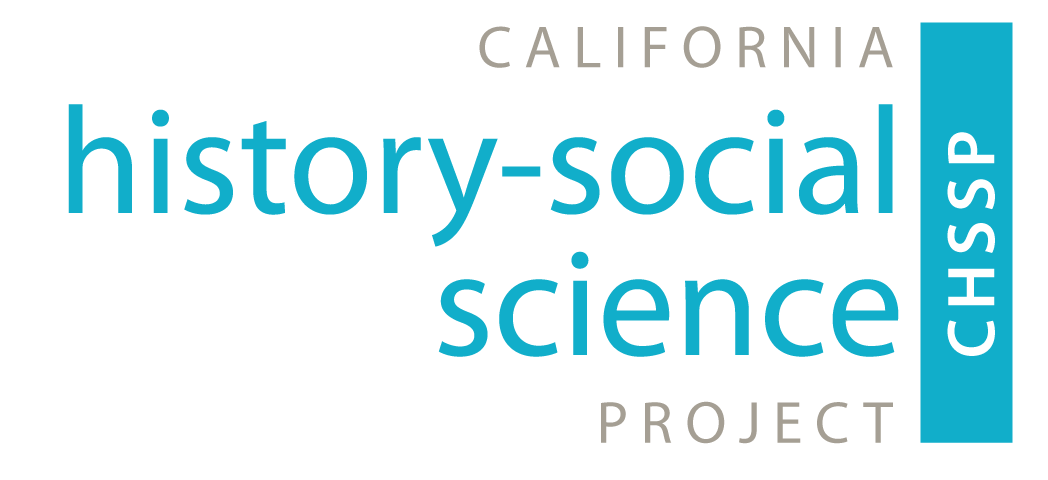
February 2025: Black History Month
Teach Black History!
February is Black History Month, and, at UC Davis, Black Futures Month, which represents the “campus community’s commitment to remembering, celebrating, and learning from the proud history of Black Americans and the promising future of all scholars who continue to bring innovation and excellence to our society.”
While we believe that history education should be intersectional and that the histories of historically underrepresented communities should be taught year-round, we also recognize the importance of celebrating Black History Month and taking the opportunity to amplify Black voices, histories, and authors. In the face of federal attacks on the teaching of diverse groups and their histories, we urge you to continue to teach Black history throughout the school year. To help you, we’ve curated a list of some helpful links.
CHSSP Resource Spotlights:
Black History and Black Futures: This Resource Spotlight from 2024 highlights several inquiry sets on black history from the CHSSP website, as well as historical scholarship and picture books. One eighth-grade inquiry set, United States Abolitionism, focuses on the actions of those, free and enslaved, who worked to end slavery.
Black History Month Highlights 2023: This Monthly Highlights page features resources on Black History from across the California Subject Matter Project Network, as well as reading lists for both teachers and students. It includes a twelfth-grade lesson on the legal and historical definitions of citizenship, which could also help contextualize current political debates over birthright citizenship.
Monthly Highlights - February 2022: This list of resources, from Black History Month 2022, includes an excellent selection of picture books that center Black voices, art, and experiences to add to your classroom library. Check some of them out here!
CHSSP Blogs:
Black History is More than Civil Rights History by Vanessa Madrigal-Lauchland (February 2022)
The Movement for Black Lives by Professor Justin Leroy (September 2020)
Other Resources for Educators:
The Center for Racial Justice in Education has perhaps the most in-depth Black History Month resource guide currently available online, Black History Month Resource Guide for Educators and Families. Resources are sorted by questions (“How do we celebrate Black History Month?,” “How do we center Black LGBTQ Experiences?”) and feature articles, lesson plans, educator tools, and more.
PBS’s Classroom Resources for Black History Month include lesson plans on Juneteenth, Black art, Muhammad Ali, and the Harlem Renaissance. Lessons are appropriate for use in middle school and high school history, ELA, and social studies classrooms.
The Library of Congress has a Black History Month for Teachers resource page that includes an extensive list of lesson plans and primary source guides. Featured lessons from the National Endowment for the Humanities include several on Black artists, musicians, and writers, which are excellent if you are working to expand your teaching of Black history to include more than the Civil Rights Movement.
Recent Scholarship:
Building the Black City: The Transformation of American Life by Joe William Trotter (2024): A sweeping history of Black cities in the United States from the development of the nation to the present. Trotter shows how Black Americans, though unpaid and underpaid labor, built many of America’s great cities in their own vision.
Dancing Down Barricades: Sammy Davis Jr. and the Long Civil Rights Era by Matthey Frye Jacobson (2024): Examines the six-decade show business career of Sammy Davis. Jr. in the context of ever-changing meanings of race in twentieth-century America. What do Davis’s life and career reveal to us about Black history and American culture?
Freedom Enterprise: Black Entrepreneurship and Racial Capitalism in Detroit by Kendra D. Boyd (2025): Boyd traces the history of the “migrant entrepreneurs” who journeyed to Detroit throughout the Great Migration. Using the framework of racial capitalism, this book tells the story of the rise and fall of the Black business community in Detroit from the 1910s through the 1960s.
The New Civil Rights Movement Reader: Resistance, Resilience, and Justice, edited by Traci Parker and Marcia Walker-McWilliams (2023): An expansive compilation of primary sources — including first-person accounts, political speeches, and photographs — that help tell the story of the fight for civil rights in the United States over the twentieth century and into the present day. Designed for educators, this is an excellent resource for bringing primary sources into the classroom.
To Advance the Race: Black Women’s Higher Education from the Antebellum Era to the 1960s by Linda M. Perkins (2024): A history of Black women’s education from early America through the twentieth century. Perkins shows how Black women’s educational accomplishments were once as celebrated as Black men’s, but, as gender roles and stereotypes became more pronounced in African American communities, opportunities for leadership and higher education became closed to Black women.
Kate’s Book Club: February Reads
And She Was Loved: Toni Morrison’s Life in Stories by Andrea Davis Pinkney, illustrated by Daniel Minter. This book is beautiful. Gorgeous art and stunning poetry. A wonderful celebration of Toni Morrison and a tribute to the power of her literary life and community. The use of the phrase “and she was loved” is a dramatic way of highlighting the encouragement and support Morrison received throughout her career. Best for middle school or high school, but the illustrations are not to be missed and would be enjoyed by students of all ages, Deeply personal notes from both the author and illustrator included in the back matter.
Crowning Glory: A Celebration of Black Hair by Carole Boston Weatherford, illustrated by Ekua Holmes. “Cornrows forming complex patterns. Shells and beads on boxy braids. A flowery ’fro that’s wash and go. A regal pouf that scrapes the sky.” Black hairstyles embody beauty and loving ritual, culture and community, expression and strength, patience, and boundless creativity in the Black community. Students will enjoy the bold illustrations and the rhyming patterns of the text. A glossary describing some twenty hairstyles for women (from Afro to updo) and other terms related to the glory of Black hair is included in the back matter.
Do You Know Them? Families Lost and Found After the Civil War by Shana Keller, illustrated by Laura Freeman. A most wonderful picture book inspired by the printed newspaper ads placed by African Americans who were separated from family members during the Civil War, enslavement, and emancipation. Using authentic ads from the 1860s, students will get a deep dive into the lengths members would go to reunite their family. Could be used to teach persuasive, concise writing in the form of a classified advertisement or post. Perfect for a short eighth-grade writing assignment during Reconstruction Unit.
Mahogany: A Little Red Riding Hood Tale by JaNay Brown-Wood, illustrated by John Joven. What a delightful spin on the traditional telling of Red Riding Hood! Mahogany is a spunky girl who loves to sew, listen to music, and wear fresh kicks. (Love this!) On the way to deliver homemade honey cornbread to Grandma's house, she encounters a hungry wolf. Because Mahogany is clever, she stands by a willow tree, where her long, black curly hair blends with the branches. She hides in the forest, where her ebony skin merges with the shadows. And Mahogany knows the lavender scent of her skin will mix with the smells of flowering plants, tricking any wolf nose. Great sensory details that are often missing in the retelling of this classic. Would be a great addition to a Red Riding Hood study, using multiple titles (i.e. Lon Po-Po: A Red Riding Hood Story from China, Big Red and the Little Bitty Wolf, The Not-So Little Red Riding Hood, The Wolf’s Story: What Really Happened to Little Red Riding Hood.)
They Built Me for Freedom: The Story of Juneteenth and Houston’s Emancipation Park by Tonya Duncan Ellis, illustrated by Jenin Mohammed. On June 19, 1865, the 250,000 enslaved people of Texas learned they were free, ending slavery in the United States. This day was soon to be memorialized with the dedication of a park in Houston. The park was called Emancipation Park, and the day it honored would come to be known as Juneteenth. This book celebrates Juneteenth with the Park’s voice, “When people visit me, they are free--to run, play, gather, and rejoice…They built me to remember.” Since Juneteenth takes place during most district’s summer breaks, this would be a lovely title to use during Black History Month. Also a great opportunity to highlight a narrative from an object's point of view. Nice interview with Tonya Duncan Ellis about the inspiration behind the book can be found here.
